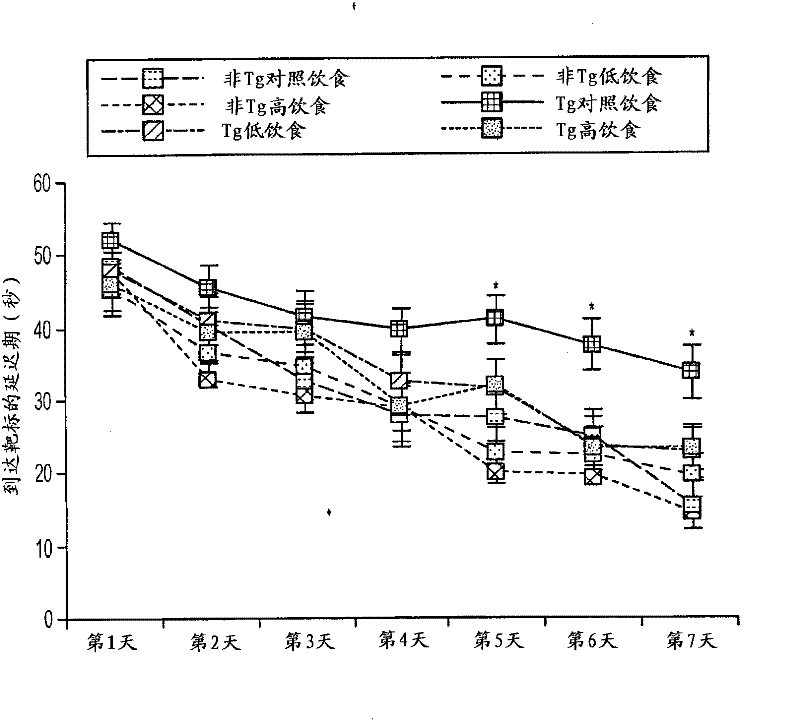Compositions for the treatment of Alzheimer's disease
A mixture, technology of use, applied in the direction of drug combination, application, food science, etc., can solve the problems shown to prevent, prevent or reverse, and not show the change of disease etiology
- Summary
- Abstract
- Description
- Claims
- Application Information
AI Technical Summary
Problems solved by technology
Method used
Image
Examples
Embodiment 1
[0117] Example 1: Evaluation of Therapy in Tg2576 Mice
Embodiment 1a
[0118] Example 1a: Cognitive Assessment
[0119] We reasoned that a combination therapy comprising multiple antioxidants and vitamins would appear to be most effective in the treatment of human AD. To support this inference, we tested the following nutrient combinations in two well-established and used AD mouse models:
[0120] Table 4: Concentrations of Joint Mixture Components vs. Low and High Concentration Diets Added to AIN-17 Rodent Diets
[0121]
[0122] As noted above, the high strength diet and low strength diet combination mixtures were prepared to provide about 660 and about 220 mg combination mixture per 1 kg rodent diet, respectively. Green Tea Extract, Bioperine with folic acid and B vitamins 12 The sources provide the respective active ingredient percentages separately. Green tea provides 50% EGCG; Bioperine Provides 98% piperine; folic acid source provides 10% folic acid; and vitamin B 12 Source Provides 1% B Vitamins 12 . Factoring these percentag...
Embodiment 2
[0131] Example 2: Evaluation of Therapy in 3xTg-AD Mice
[0132] Given these extremely promising results, we attempted to validate a diet containing the combination mixture by testing a high-concentration diet in a second AD mouse model (3xTg-AD mouse model). 3xTg-AD mice progressively develop Aβ and tauopathies with time- and region-specific features that closely mimic their occurrence in human AD brains. Despite equal expression of human APP and human tau transgenes, Aβ deposition precedes tangle lesions. Extracellular Aβ deposits manifested in the cortex by 6 months of age, and by 12 months, Thioflavin S-positive and Congo red-positive. At ~6 months of age, tau translocates to the dendritic compartment of the cell body, reactivity with conformation-specific antibodies (such as the mouse monoclonal antibody MC-1) is evident by 10 months, and shortly thereafter at approximately 10 months. Immunoreactivity for phospho-specific tau markers was evident at -12 months of age. T...
PUM
 Login to View More
Login to View More Abstract
Description
Claims
Application Information
 Login to View More
Login to View More - R&D
- Intellectual Property
- Life Sciences
- Materials
- Tech Scout
- Unparalleled Data Quality
- Higher Quality Content
- 60% Fewer Hallucinations
Browse by: Latest US Patents, China's latest patents, Technical Efficacy Thesaurus, Application Domain, Technology Topic, Popular Technical Reports.
© 2025 PatSnap. All rights reserved.Legal|Privacy policy|Modern Slavery Act Transparency Statement|Sitemap|About US| Contact US: help@patsnap.com



